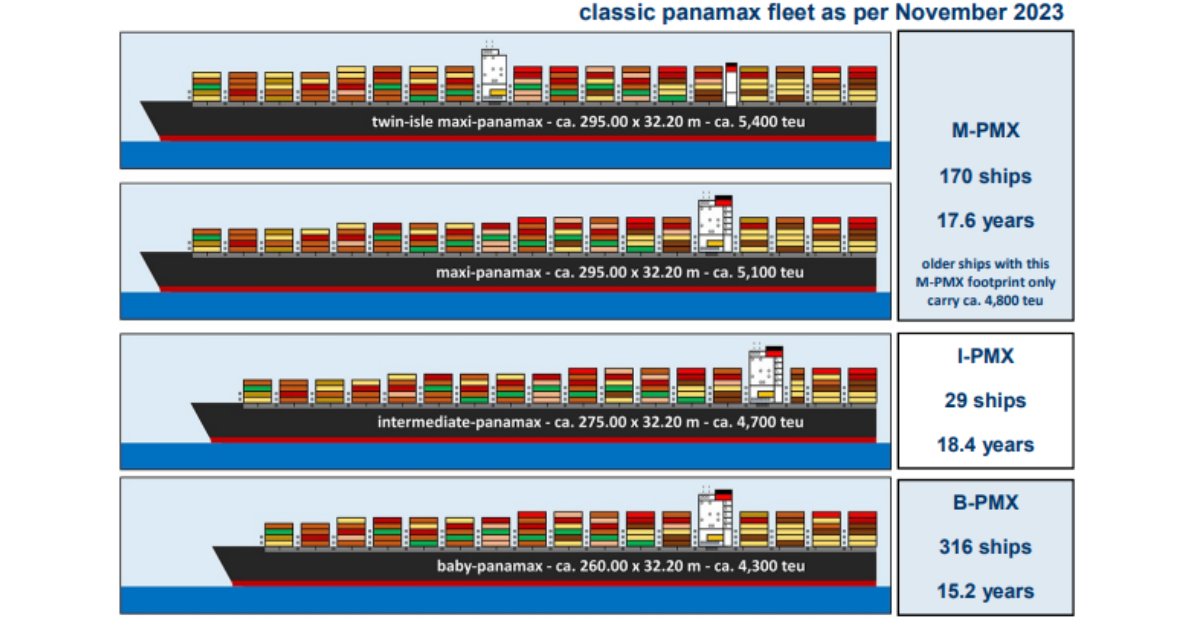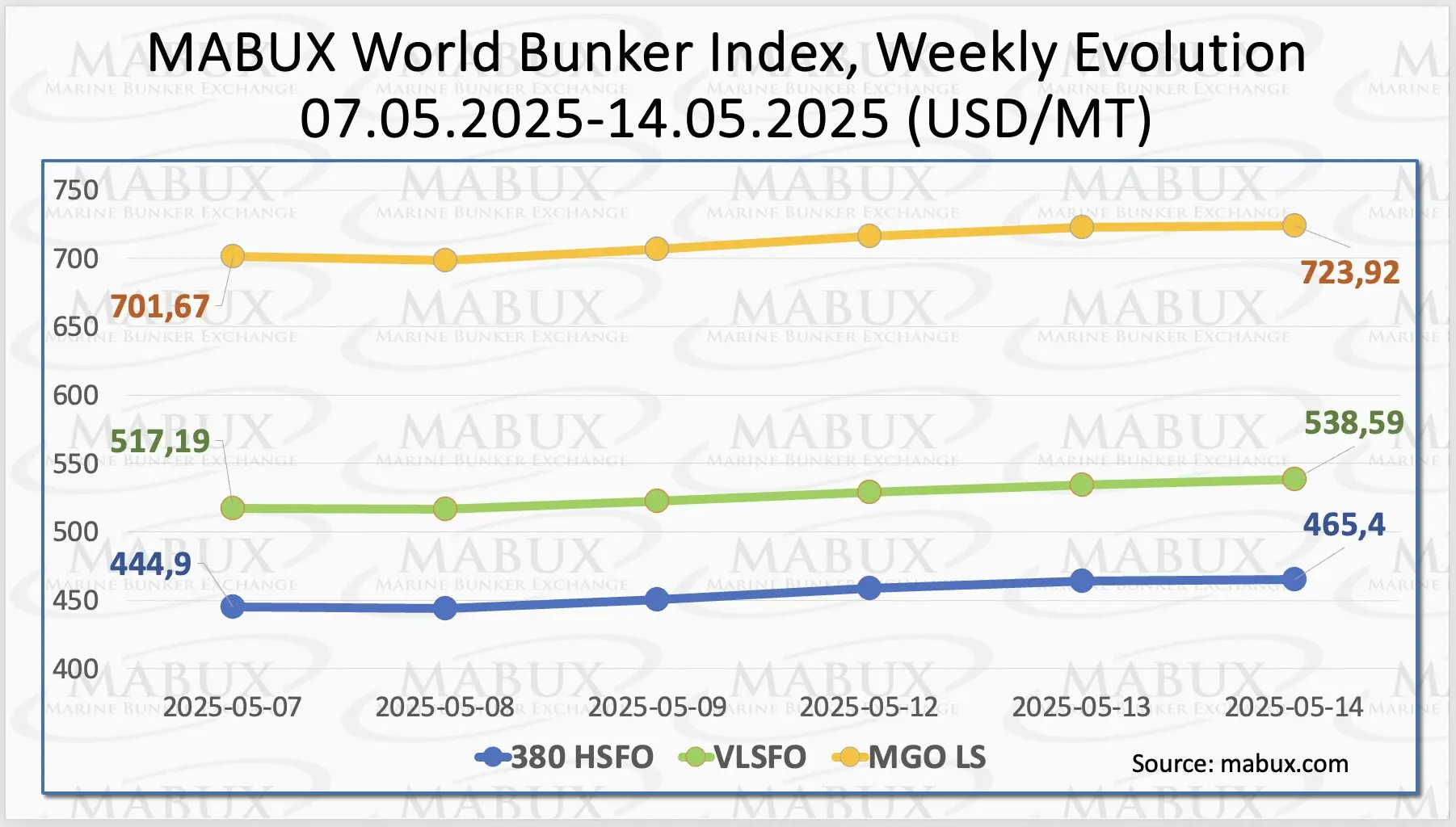
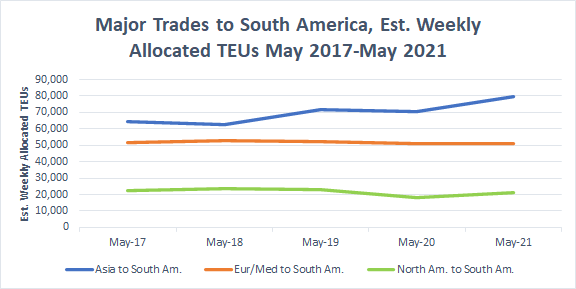
In the past few years, Asia has increased their trade dominance across the South American continent’s economies. China has increased their partnership with various Latin American countries, including Brazil and Peru, as part of their Belt and Road Initiative.
Peru recently reported that their growth in goods traded had outpaced the rest of the region, with 14.9% growth, compared to Latin America’s overall growth of 9.5%. A major ongoing project in Peru, announced in 2019, is a new COSCO-owned $3 billion “mega-port” north of Lima, at Chancay, which will further increase trade between the two regions, and be an important connection along the new “Silk Road” into the rest of the continent.
The container trade with Brazil has struggled to keep up with the increasing consumer demand in the country. Demand for consumer goods manufactured in Asia has grown, while the availability of containers along the route is dwindling. In response to these conditions, Hapag-Lloyd announced a rate increase from East Asia to East Coast South America to 600 USD per container, which took effect June 1, 2021.
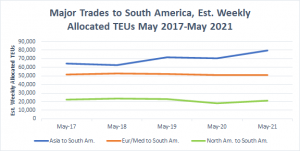
Using BlueWater Reporting’s Capacity Report, the above chart looks at the top three trading regions capacity to South America, east and west coasts, over the past four years.
Since May 2017, the estimated weekly allocated capacity from Europe/Mediterranean and North American to South America has stagnated or even slightly declined. From Europe/Med, the capacity declined by 1.5% from 51,862 estimated weekly allocated TEUs in May 2017 to 51,095 TEUs in May 2021. From North America, the capacity declined by 4.8% from 22,340 estimated weekly allocated TEUs in May 2017 to 21,268 TEUs in May 2021.
The capacity statistics from Asia to South America are vastly different. In May 2017, the estimated weekly allocated capacity was 64,636 TEUs, but has since grown to 79,581 TEUs in May 2021, a 23.1% increase in capacity.
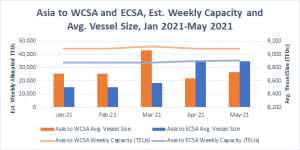
The above chart compares the capacity and average vessel size from Asia to the West and East Coasts of South America since January 2021. Unsurprisingly, the West Coast is still the more preferred route from Asia, as evidence by the allocated capacity, due to their proximity and lower costs.
On the left side, the estimated weekly allocated TEUs from Asia to WCSA has remained stagnant since January 2021, with the May 2021 capacity for the West Coast being 44,367 TEUs, only a miniscule 0.09% increase from January. The capacity to the East Coast from Asia has slightly increased by 3.95% since January 2021 to 35,214 TEUs at the end of May 2021.
The right vertical axis shows the average vessel size in TEUs. Vessel sizes have increased to the East Coast from 8,506 TEUs in January, to 8,899 TEUs in May 2021. This overtakes the average vessel size to the West Coast which was 8,731 TEUs as of the last week of May.
Source: Bluewater Reporting (please check out their website)










